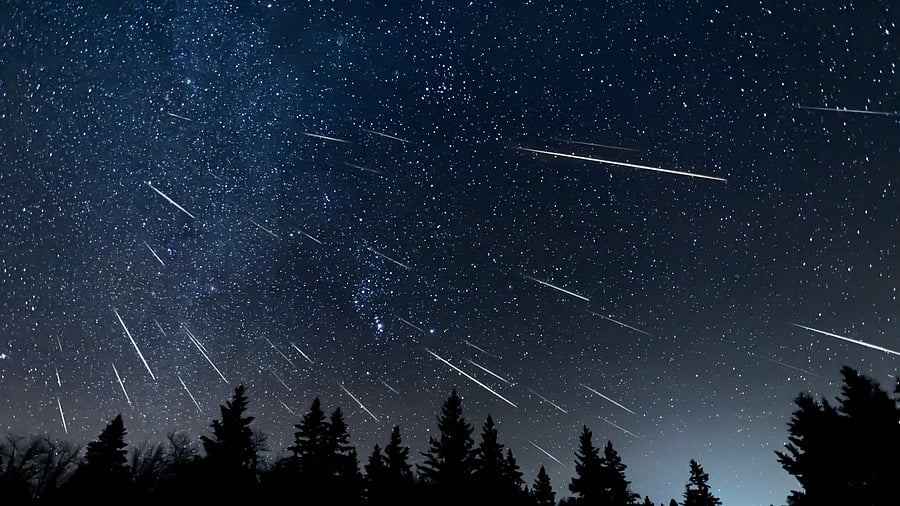
Image for representational purposes.
Credit: iStock Photo
The Perseid Meteor Shower, an annual space spectacle for the Northern Hemisphere, will see the highest number of fireballs racing through the night sky on 12-13 August. With an almost complete Sturgeon Moon, and the planets Jupiter and Venus making a special appearance amongst the stars, here is all you need to know about the event.
The Perseid Meteor Shower, which are caused by the debris left by Comet Swift-Tuttle, is a centuries-old event which occurs annually and is the "most popular meteor shower of the year," as stated by NASA.
Named after the Perseus constellation, which the debris are said to radiate outwards from, the comet orbits the Sun one time in every 133 years. It was last spotted in the year 1992, and is next expected to pass the Sun in 2125. As our planet revolves around the Sun, it passes through the trail of debris of Swift-Tuttle, hence we see the balls of fire streaking the sky with shoots of light as the debris collide with Earth's atmosphere.
For this year, the Royal Observatory has stated that the shower began on 17 July, and will continue till 24 August. It will reach its peak on 12 August, and a number of meteors will pass through the night sky, but due to the August Sturgeon moon, the visibility of the shower will be low.
Though the Sturgeon moonrise took place on 9 August, it will continue to be luminous on the day of the shower, which will effect the sighting of the event. According to NASA, fewer than half of the meteors usually seen during the peak of the spectacle will be visible. The peak time for the meteor will see a waning gibbous moon brightening the sky, but dulling the sights of the meteors.
On darker skies, there are around 40-50 meteors that are visible per hour. But, due to the Sturgeon moon, around 10-20 per hour, if not fewer, according to NASA's Meteoroid Environments Office lead, Bill Cooke.
The Perseids are known for their Fireballs, as their colour and light last longer than an average meteor.
The Perseids' earliest sighting is said to be around 2,000 years ago, in ancient China, according to the Economic Times, and the meteor shower was linked to the Comet Swift-Tuttle by Giovanni Schiaparelli, an Italian astronomer, a milestone for a meteor shower being definitively linked back to its radiant source.
